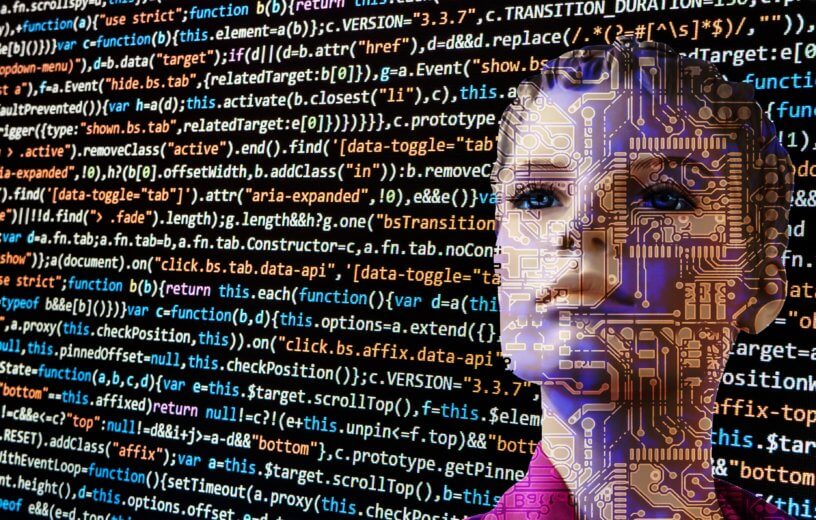PISCATAWAY, N.J. — No invention signifies humanity’s ingenuity and intelligence quite like the computer. A miracle of the modern age, countless works of science fiction have predicted an inevitable confrontation in the not-so-distant future: man versus machine. Now, according to researchers at Rutgers University, it appears machines have already bested humanity when it comes to at least one scientific subject.
Professor Vikas Nanda of Rutgers University has spent over two decades meticulously studying the intricate nature of proteins, the highly complex substances present in all living organisms. He has dedicated his professional life to contemplating and understanding the unique patterns of amino acids that make up proteins and determine if they become hemoglobin, collagen, etc. Additionally, Prof. Nanda is an expert on the mysterious step of self-assembly, in which certain proteins clump together to form even more complex substances.
So, when study authors set out to conduct an experiment pitting a human – someone with a deep, intuitive understanding of protein design and self-assembly – against the predictive abilities of an AI computer program, Prof. Nanda made for a perfect participant.
Study authors wanted to see who, or what, could do a better job at predicting which protein sequences would combine most successfully — Prof. Nanda and several other humans, or the computer. The published results indicate the intellectual battle is close, but the AI program beat out the humans by a small margin.
What can scientists use protein self-assembly for?
Modern medicine is heavily invested in protein self-assembly because many scientists believe that fully grasping the process may lead to numerous revolutionary products for medical and industrial uses, such as artificial human tissue for wounds or catalysts for new chemical products.
“Despite our extensive expertise, the AI did as good or better on several data sets, showing the tremendous potential of machine learning to overcome human bias,” says Nanda, a professor in the Department of Biochemistry and Molecular Biology at Rutgers Robert Wood Johnson Medical School, in a university release.
Proteins consist of large amounts of amino acids, joined together end to end. These amino acid chains fold up to form three-dimensional molecules with complex shapes. The exact shape is important; the precise shape of each protein, as well as the specific amino acids it contains, determines what it does. Some scientists, including Prof. Nanda, regularly engage in an activity called “protein design,” which entails creating sequences that produce new proteins.
Most recently, Prof. Nanda and a team of researchers designed a synthetic protein capable of quickly detecting the dangerous nerve agent known as VX. This protein may lead to the development of new biosensors and treatments.
For reasons still unknown to modern science, proteins self-assemble with other proteins to form superstructures important in biology. Sometimes it appears the proteins are following a design, such as when they self-assemble into a protective outer shell of a virus (capsid). In other cases, however, proteins will self-assemble seemingly in response to something going wrong, ultimately forming deadly biological structures associated with diseases ranging from Alzheimer’s to sickle cell.
“Understanding protein self-assembly is fundamental to making advances in many fields, including medicine and industry,” Prof. Nanda adds.
How did the AI program perform?
During the test, Prof. Nanda and five other colleagues received a list of proteins and had to predict which ones were likely to self-assemble. The computer program made the same predictions, and then researchers compared responses from man and machine.
The human participants made their predictions based on their prior experimental protein observations, such as patterns of electrical charges and degree of aversion to water. The humans ended up predicting 11 proteins would self-assemble. The computer program, meanwhile, via an advanced machine-learning system, chose nine proteins.
The human experts were correct regarding six out of the 11 proteins they chose. The computer program earned a higher accuracy percentage, with six out of the nine proteins it picked out indeed able to self-assemble.
Study authors explain the human participants tended to “favor” certain amino acids over others, which led to incorrect predictions. The AI program also correctly identified some proteins that weren’t “obvious choices” for self-assembly, opening the door for more research. Prof. Nanda admits that he was once a doubter of machine learning for protein assembly investigations, but now he is much more open to the technique.
“We’re working to get a fundamental understanding of the chemical nature of interactions that lead to self-assembly, so I worried that using these programs would prevent important insights,” he concludes. “But what I’m beginning to really understand is that machine learning is just another tool, like any other.”
The study is published in the journal Nature Chemistry.


Hmm… and who exactly did the grading?
How about running the same AI experiment on the Proton Radius Puzzle?